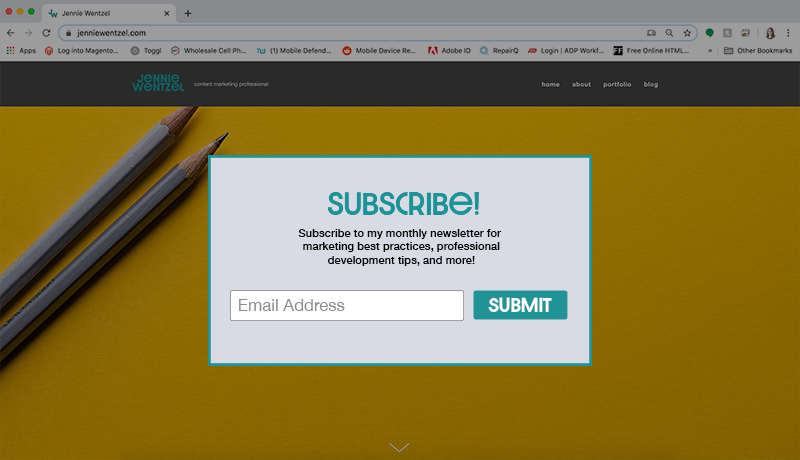Six Steps to Make Email Marketing Your Small Business’s Most Powerful Tool
Photo by Webaroo.com.au on Unsplash
There are over 3 billion email users worldwide. There is no doubt that email is fully ingrained in both the personal and professional lives of the large majority of the US population. In fact, in a 2017 survey by Campaign Monitor, over 50% of respondents stated that they check their personal email accounts more than 10 times per day.
As a business, however, it can be daunting to think about trying to reach a captive audience using email marketing. After all, when was the last time that you opened a promotional email from another business? How many of those newsletters are sitting unopened and unread in your inbox right now?
The Six-Step Secret to Success
If you want to take your email marketing to the next level in 2020—in a time when it’s easier than ever to block out digital advertisements—it’s important to start your email marketing strategy off on the right foot. Follow these simple steps to grow your email list, and ultimately, your list of happy customers!
1. Do NOT buy an email list.
I know this isn’t technically a step in the process, but I cannot stress enough how much of a bad idea it is to buy a list of contacts to use to build your list. It may seem more efficient to do things this way, but there’s a reason that seasoned marketers cringe at the idea of buying or borrowing email lists. Here’s exactly how you could be shooting yourself in the foot with this strategy:
Your recipients’ first impression of your brand is that you’re spammy.
It skyrockets your unsubscribe rates, which could suspend your account on certain newsletter platforms.
The best emails and contacts are never for sale. It’s likely that these recipients have already been spammed by other businesses and are therefore no longer in use.
These are people that don’t know you or your brand. You can’t even be totally sure that these are real people that meet your target demographics.
If you want to see a higher ROI on your email marketing efforts, you will need to grow your email list organically. It will take time, but you’ll see open rates and click through rates that will convert more email users into valuable customers.
2. Grab the easy subscribes first.
Start by placing a newsletter subscription box in multiple places on your website. Don’t tuck it at the bottom of your homepage; make it easy for eager potential customers to provide their contact information so you can reach them. This call-to-action, or CTA, should make it clear to users that this is where they can subscribe to your newsletter for offers, information, and important updates.
Photo by Austin Distel on Unsplash
3. Create a free offer.
Now, think of those website visitors that are less eager to fill out your form. Entice them to provide their information by creating something they may be looking for, as it relates to your products or services. If you’re a yoga teacher, for example, you can create a free step-by-step guide or video on how to practice headstands or another complicated pose. Simply ask users for their email address to view or download the guide, and watch your email list grow organically with a much more captive audience.
4. Segment your lists.
As your email lists grow, you’ll find that some subscribers are looking for different types of content. Your subscribers that signed up in a general subscription box might be more prepared to make a purchase or schedule an appointment with you. Subscribers that are captured in your free opt-in offers may need some more nurturing to develop more trust in your brand.
As you learn more about each of your subscribers and what they’re looking for, you should tailor your email content to them. One of my clients saw a 285% increase in revenue generated from emails after we switched to segmented campaigns. That number will only grow more! According to Campaign Monitor, personalized, segmented campaigns can drive up to a 760% increase in revenue.
5. Continue to send valuable content to your subscribers.
Stay at the top of your subscribers’ minds by sending them regular, relevant, and valuable content. Remember, they can unsubscribe from your emails at any time; give them a reason to stick around. For example, if your small business is a hair salon, you can do a weekly or bi-weekly newsletter series where you share quick hair care tips, product reviews, or color trend alerts to your interested subscribers. Make them glad that they handed you their email address! This ultimately creates more and more trust in your brand—the kind of trust that will not only make them want to purchase from you, but tell their friends about you too!
6. Make compliance a priority.
In 2003, an act titled Controlling the Assault of Non-Solicited Pornography And Marketing (CAN-SPAM) was passed to allow email recipients to prevent businesses from sending them unsolicited messaging. As you build out your email list, you should prioritize compliance with CAN-SPAM not only because it’s the law, but also because it’s generally good practice to follow in email marketing. Here are some guidelines to keep in mind:
Include an easy-to-find unsubscribe link at the bottom of every email you send.
Once users unsubscribe, make sure to actually remove them from your list, and don’t add them back.
Display your physical location at the bottom of your emails. This is good practice because it helps build the credibility of your brand.
According to salecycle.com, email marketing has an average return on investment (ROI) of $32 for every $1 spent. 59 percent of marketers say that this is their biggest source of ROI. By organically growing your email subscribers list using valuable and relevant content, your small business can start to see a high return on your email marketing efforts as well.







Hi! I’m Jennie.
Thank you for visiting my blog! I write about marketing tips for small businesses and how to succeed as a female professional. I write from experience about the things that I love.